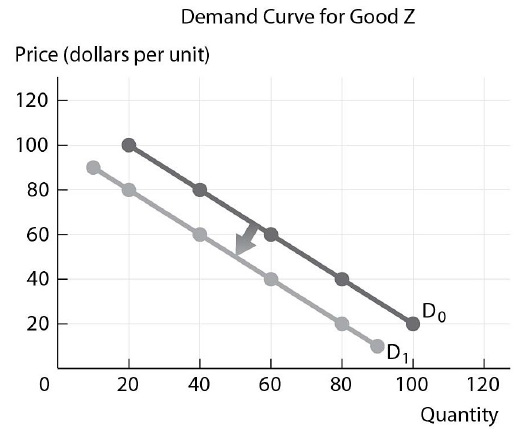The domestic-public dichotomy refers to the separation of
A. secular and sacred domains.
B. spheres of exchange.
C. the elite and commoners.
D. cooking and sleeping spaces in residential units.
E. home and the outside world.
Answer: E
You might also like to view...
Homo erectus fossils were first discovered by __________.
A) Mary Leakey B) Eugene Dubois C) G. H. R. von Koenigswald D) Raymond Dart
Which of the following are the four bases in a DNA molecule?
a. cytosine, guanine, thymine, adenine b. adenine, thymine, guanine, purine c. purine, pyrimidine, adenine, thymine d. adenine, purine, pyrimidine, cytosine
Refer to the figure below. Which of the following could have caused the shift in the demand curve?

A) a decrease in the price of a complement for Good Z
B) an increase in the price of Good Z
C) a decrease in income if Good Z is a normal good
D) a decrease in the price of Good Z
Transhumance is a migratory pattern that
A) is found among the Bedouin of the Arabian Peninsula. B) is no longer followed by present-day pastoralists. C) is only followed by camel herders. D) involves regular movement over a large area in search of forage. E) involves seasonal movement of livestock between upland and lowland pastures.